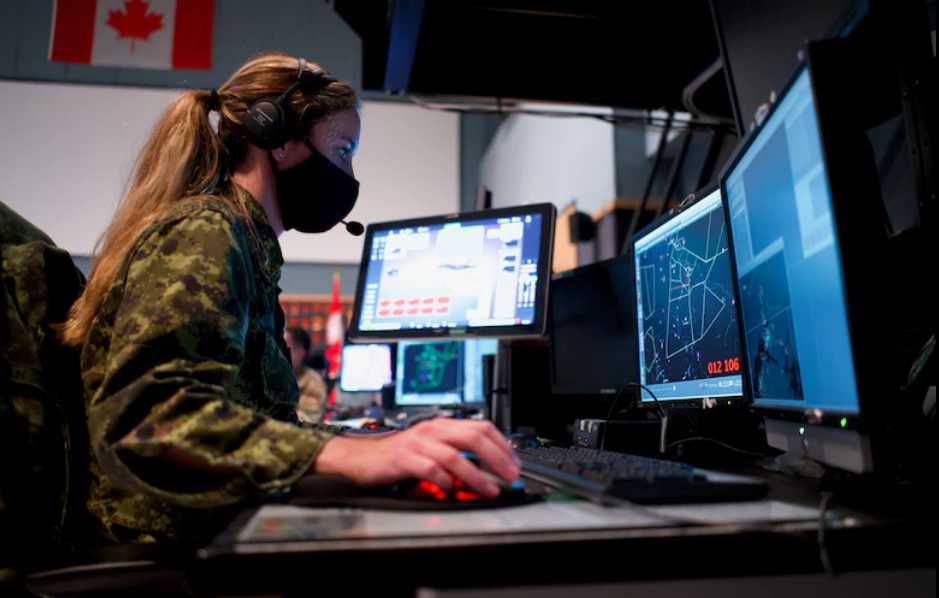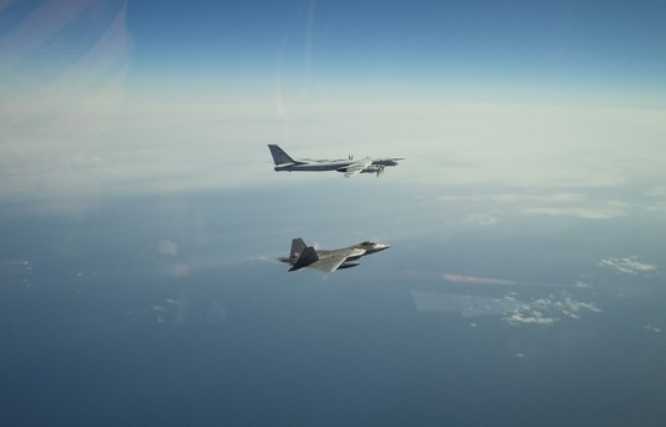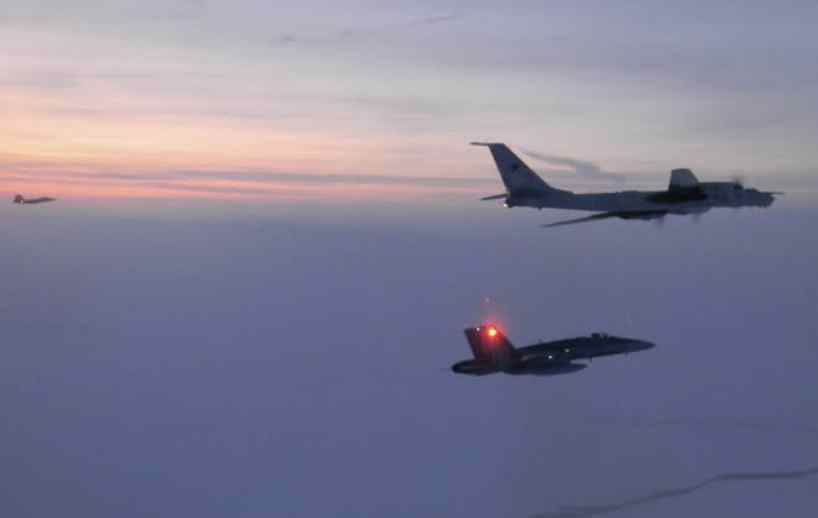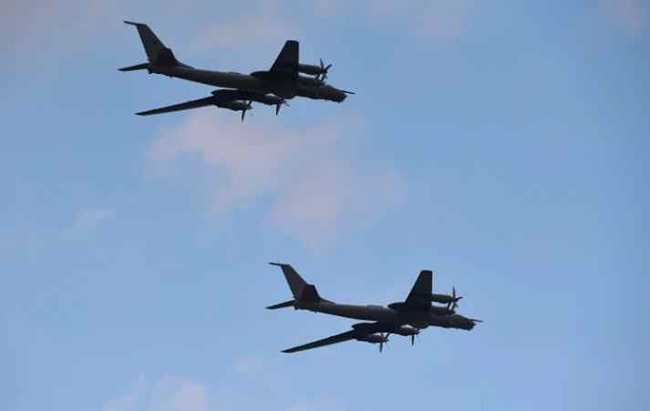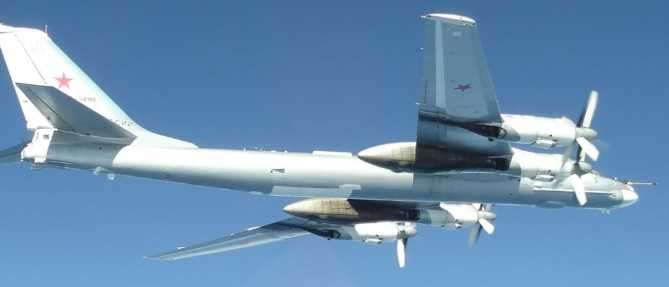
JOINT BASE ELMENDORF-RICHARDSON, Alaska — Two Russian Tu-95 Bears and two Chinese H-6 Badgers with Su-30 and Su-35 Flanker fighter escorts speared across the sky July 24, 2024, in formation over the northern Pacific careening toward the Alaska Air Defense Identification Zone and bringing the nuclear-capable long-range bombers closer to U.S. sovereign airspace.
The combined bomber patrol marked the first time NORAD detected Russian and Chinese military aircraft together entering the Alaska ADIZ and the first time Chinese warplanes have encroached the U.S. ADIZ.
From their battle command center at JBER, Alaska Air National Guardsmen and Canadian Armed Forces Airmen of 176th Air Defense Squadron provided mission command for interception of the bombers 500 miles from the coast of Alaska by NORAD-assigned U.S. Air Force F-16 Fighting Falcons and F-35 Lightning IIs as well as NORAD-assigned Royal Canadian Air Force CF-18 Hornets.
At the technological center of the successful detection and intercept was the 176th ADS Battle Command Center’s 3rd generation AN/FYQ-156 Tactical Command and Control System, which is also known as Battle Control System-Fixed.
Lt. Col. James Fowley, former 176th ADS commander, said NORAD introduced BCS-F in 2004 and fielded it in 2006. It’s predecessor, the AN/FYQ-93, had been in service since 1983 and used an analog graphical user interface with a keyboard and antiquated arcade-style trackball.
BCS-F brought the BCC into the 21st Century by upgrading the user interface to a modern tactical display framework providing advanced technology that features increased sensor capacity while improving interoperability among hundreds of legacy sensors including more types of radar systems than previous Air Force systems.
Fowley said the challenge with BCS-F and its operator workstations was the inability to integrate other required air surveillance systems into a single user interface that is easy to use.
Nearly every system that was added to 176th ADS operator workstations during the two decades following 9/11 had its own hardware requiring a separate keyboard and computer mouse to access the siloed systems. This arrangement resulted in an overly complex configuration forcing air defense operators to comb through several stove-piped systems to develop tactical actions and decisions to conduct air defense intercepts.
In December, NORAD completed a $13.1 million agile operations project, which simplified configuration. A Jan. 24 ribbon cutting ceremony officiated by Royal Canadian Brig. Gen. David Moar, Alaskan NORAD Region deputy commander, and Fowley marked the 176th ADS BCC as fully operational capable.
“This first of its kind in [Indo-Pacific Command] provides the combatant commander with increased efficiency and reduced opportunities for human error,” Fowley said during the ceremony. “We’ve already put the system to good use. It conducted the first NORAD intercepts of two Chinese H-6 bombers and most recently intercepted Tu-95s off the coast of Alaska [Dec. 14].”
The National Guard Reserve Equipment Appropriation provided funds for the agile operations project through Air Combat Command, the Continental U.S. North American Aerospace Defense Command-1st Air Force (Air Forces Northern/Air Forces Space), and the National Guard Bureau. The Naval Warfare Information Center, Atlantic, provided technical oversight and conducted the planning and construction in conjunction with 176 ADS Airmen.
Air defense operators on the operations floor now have access to all systems at a workstation through a single keyboard, video and mouse system called ThinkLogical, which provides them with the ability to rapidly switch between multiple systems at different security classifications enabling air defense crews to develop, share and take action on critical information much faster than on the previous workstations.
Maintenance on the agile operations system has also been greatly simplified. Cyber maintainers now have unimpeded access to equipment, and coordination time has been significantly reduced for routine maintenance on the systems.
The new equipment installation, which is driven by rapid technological changes, can now be accomplished without disrupting air defense operations. The space saved by removing hardware also means the operations floor can be split into two distinct sections for executing multiple battle management teams in defense of Alaskan airspace if the need arises.
Moar said, due to ever-increasing strategic and geopolitical complexity, 176th ADS Airmen are being asked to do more to keep up with the tactical environment, and the modernized BCS-F helps them to ably adapt to NORAD’s mission requirements.
“We owe you every single advantage we can possibly give you,” the general said. “We put you in hard situations, we ask you to work hard every day, and we owe you the best environment we can give.”
[content id=”79272″]

